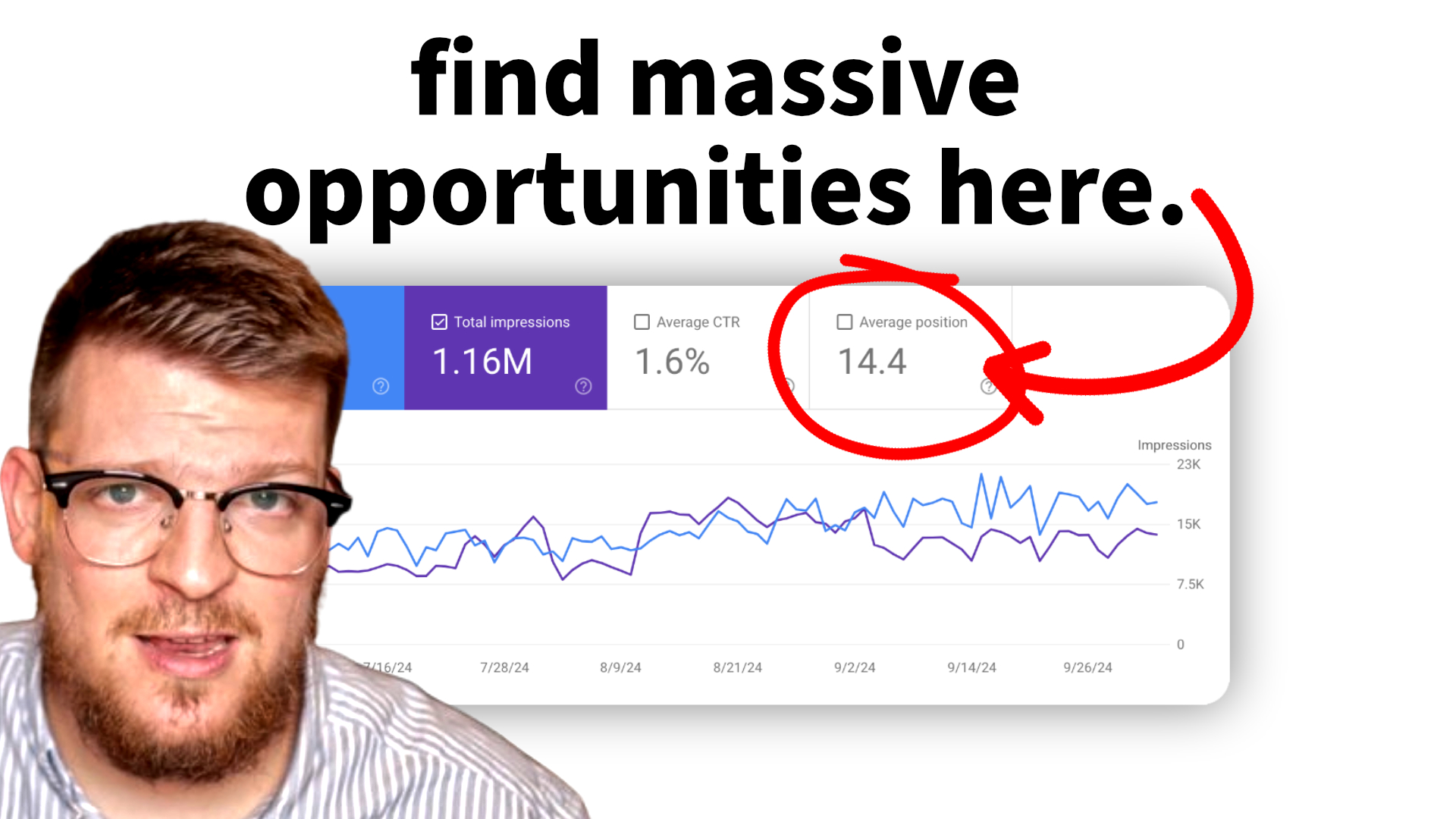The Low Hanging Fruit Content Refresh technique offers a straightforward approach to boost organic search traffic. This method focuses on optimizing existing content by targeting keywords that already rank between positions 5 and 15 in search results. By making strategic adjustments to key elements of a webpage, businesses can potentially see significant increases in click-through rates and overall visibility.
The technique revolves around three main steps: identifying suitable keywords, selecting a target keyword, and incorporating that keyword into crucial areas of the page. These areas, known as the “three kings” in SEO, include the title tag, H1 tag, and the opening sentence or paragraph of the main content. This targeted optimization helps clarify the page’s topic for both search engines and users, potentially leading to improved rankings and increased organic traffic.
Refreshing Low-Ranking Content for Improved Search Performance
The Low Hanging Fruit Content Refresh technique aims to boost organic search traffic by optimizing existing content. This method focuses on pages ranking between positions 5 and 15 in search results, as these present significant opportunities for improvement.
The process involves three key steps:
- Identify keywords for which the site ranks between positions 5 and 15
- Select a target keyword
- Insert the target keyword into the “Three Kings”:
- Title tag
- H1 tag
- First sentence or paragraph of the body copy
While not essential for ranking, including the keyword in the URL and meta description can further reinforce the page’s topic.
This technique can yield substantial traffic increases. Moving from position 10 to position 5 could potentially increase clicks by 7 times, while reaching position 1 might result in up to 32 times more clicks.
To implement this strategy:
- Access Google Search Console
- Navigate to Search Results under Performance
- Enable the Average Position box
- Filter results to show positions greater than 4.9
- Review the list and select a suitable keyword
- Identify the corresponding page
- Optimize the page by incorporating the target keyword into the Three Kings
This method can serve as a quick improvement while planning more comprehensive content updates. It helps clarify the page’s topic for search engines and may lead to increased visibility and traffic.
Identifying the Three Steps for Increased Organic Traffic
Boosting organic traffic to a website can be achieved through a simple yet effective technique called the “low-hanging fruit content refresh.” This method involves three key steps:
- Find keywords ranking between positions 5 and 15
- Select the target keyword
- Insert the target keyword into the “three kings”
The first step requires using Google Search Console to identify keywords that currently rank between positions 5 and 15 for a website. This range is crucial because improving rankings for these keywords can significantly increase click-through rates and traffic.
Step two focuses on choosing the most appropriate target keyword from the list generated in step one. This selection process should consider factors such as search volume and relevance to the content.
The final step involves optimizing the content by incorporating the chosen keyword into three critical areas:
- Title tag
- H1 tag
- First sentence or paragraph of the body copy
These areas are referred to as the “three kings” because they play a vital role in helping search engines understand the main topic of a page. While not essential for rankings, including the keyword in the URL and meta description can provide additional clarity.
By implementing this technique, websites can potentially see significant improvements in their search rankings and organic traffic within a relatively short period. This method has proven effective in practice, with some websites experiencing notable ranking increases and even securing featured snippets for their target keywords.
The Three Essential Elements in SEO Rankings
The “Three Kings” in SEO refer to crucial on-page elements that significantly influence a webpage’s ranking potential. These elements are the title tag, H1 tag, and the opening sentence or paragraph of the main content.
The title tag appears in search engine results and browser tabs. It should concisely describe the page’s topic and include the target keyword. For example, a page about stock markets might use “What Is the Stock Market? Definition and Explanation” as its title tag.
The H1 tag is typically the main visible heading on a webpage. It should clearly state the page’s primary topic and incorporate the target keyword. Using the same example, an appropriate H1 might be “What Is the Stock Market?”
The opening sentence or paragraph should quickly address the main topic and include the target keyword. This helps both search engines and users quickly understand the page’s content. For instance: “The stock market is a collection of exchanges where publicly traded companies’ shares are bought and sold.”
Optimizing these three elements can potentially improve a page’s search engine visibility. However, it’s important to note that while these optimizations are valuable, they are just one part of a comprehensive SEO strategy. Other factors, such as content quality, backlinks, and user experience, also play significant roles in determining search rankings.
Implementing the Technique in Practice
Examining Investopedia’s SEO Strategy
Investopedia demonstrates effective use of key SEO elements on their page about the stock market. The URL contains “stock market”, while both the H1 tag and title tag feature “What is the stock market”. The page opens with a clear definition, repeating it multiple times to emphasize the topic. This approach helps both search engines and readers quickly grasp the page’s subject matter.
Analyzing Wix’s Logo Design Page
Wix’s page on logo design follows a similar pattern. The phrase “how to design a logo” appears in the URL, H1 tag, title tag, and first paragraph. This consistent use of the target keyword across crucial page elements likely contributes to its high search ranking for related queries.
Steps to Apply the Technique
- Use Google Search Console to identify keywords ranking between positions 5-15
- Select a target keyword from this list
- Update the following elements with the chosen keyword:
- Title tag
- H1 tag
- First sentence or paragraph of content
- (Optional) URL and meta description
Potential Traffic Increases
Based on click-through rate (CTR) data:
- Moving from position 10 to 5 could increase clicks by 7 times
- Reaching position 1 might boost clicks by 32 times
| Position | CTR |
|---|---|
| 1 | 45.8% |
| 5 | 6.8% |
| 10 | 1.42% |
Applying this technique across multiple pages can significantly impact overall site traffic.
Key Misunderstandings in SEO Strategy
Many website owners mistakenly believe that simply publishing content is enough to attract organic search traffic. This approach often leads to disappointing results. A more effective strategy involves optimizing existing content, particularly pages ranking between positions 5 and 15 in search results.
One common error is neglecting to include target keywords in crucial locations. The “three kings” of SEO are the title tag, H1 tag, and first paragraph of body copy. Failing to incorporate relevant keywords in these areas can confuse search algorithms and reduce visibility.
Some content creators wrongly assume that lengthy introductions are necessary for all articles. While engaging openings can be valuable, certain topics benefit from direct answers placed at the beginning. This approach aligns with user intent and can improve search performance.
Another misconception is that SEO improvements require extensive time and resources. In reality, simple adjustments to existing content can yield significant traffic increases. Focusing on pages already ranking in the 5-15 range allows for quick wins with minimal effort.
Many website owners overlook the importance of Google Search Console data. This free tool provides valuable insights into search performance and helps identify opportunities for optimization. Neglecting this resource can result in missed chances to improve rankings and traffic.
SEO success is often viewed as an all-or-nothing proposition. However, even small ranking improvements can lead to substantial traffic gains. Moving from position 10 to position 5 can potentially increase clicks by several times, highlighting the value of incremental progress.
Implementing the Low-Hanging Fruit Content Refresh Technique
The Low-Hanging Fruit Content Refresh technique can significantly boost organic search traffic with minimal effort. This method involves three key steps:
- Identify keywords ranking between positions 5 and 15
- Select a target keyword
- Insert the target keyword into the “Three Kings”
The “Three Kings” are crucial elements Google uses to determine a page’s content:
- Title tag
- H1 tag
- First sentence or paragraph of body copy
To implement this technique:
- Access Google Search Console
- Navigate to Search Results under Performance
- Enable the average position box
- Filter results for positions greater than 4.9
This range is chosen based on click-through rates (CTR) for different search result positions. Moving from position 10 to position 5 can potentially increase clicks by 7 times, while reaching position 1 could lead to a 32-fold increase in traffic.
Example implementation:
- Identify keyword: “how to write a good song”
- Determine target page
- Optimize “Three Kings”:
- Update title tag
- Modify H1 tag
- Revise opening paragraph
By applying this technique across multiple pages, websites can experience significant improvements in search rankings and organic traffic. It’s important to note that while this method can be effective, it doesn’t guarantee instant success in Google rankings.
Optimizing Search Rankings
Leveraging Google Search Console
Access Google Search Console and navigate to the Search Results section under Performance. Enable the average position box to view keyword rankings. Click the inverted pyramid icon and select “Position” to filter results. Set the filter to show positions greater than 4.9, focusing on keywords ranking between 5 and 15.
Analyzing Position Data
Examine the click-through rate (CTR) chart for different search result positions. Position 1 typically garners a 45.8% CTR, with a sharp decline for subsequent positions. Moving from position 10 (1.42% CTR) to position 5 can potentially increase clicks by 7 times. Reaching position 1 could yield a 32-fold increase in traffic.
Enhancing Click-Through Rates
Identify target keywords from the filtered results in Search Console. Click on a chosen keyword to view the associated page. Analyze the page’s current optimization for the selected keyword.
Refining Keyword Strategy
Focus on optimizing three key areas for the target keyword:
- Title tag
- H1 heading
- First sentence or paragraph of body content
Consider including the keyword in the URL and meta description, though these may not directly impact rankings.
Examine top-ranking pages for your chosen keyword to observe their optimization techniques. Note how they incorporate the keyword in crucial page elements.
Wrap-up and Key Takeaways
The LWH hanging fruit content refresh technique offers a straightforward approach to boost organic search traffic. By focusing on keywords ranking between positions 5 and 15, website owners can significantly increase their click-through rates.
The process involves three main steps:
- Identify target keywords
- Select the most promising keyword
- Insert the keyword into the “three kings”:
- Title tag
- H1 tag
- First sentence or paragraph
This method can lead to notable improvements in search rankings and even featured snippets. A real-world example showed rankings increasing within weeks of implementation.
To find suitable keywords:
- Access Google Search Console
- Navigate to Search Results under Performance
- Filter for positions greater than 4.9
- Review the list for promising opportunities
The potential traffic gains are substantial. Moving from position 10 to 5 could increase clicks by 7 times, while reaching position 1 could result in a 32-fold increase.
This technique serves as a quick win, allowing time for more comprehensive content updates later. It’s a valuable tool for SEO professionals and website owners looking to maximize their search visibility and traffic.

